Panasonic Lumix GX9 review
Summary
 Panasonic's Lumix GX9 is a have-packed mid-mountain chain mirrorless photographic camera, featuring a 20 Megapixel Four Thirds detector that's stable within the personify, an electronic viewfinder and touchscreen, some of which bum tilt vertically, 9fps bursts with dogging autofocus, 4k video with Panasonic's regalia of clever 4k Photo modes, and Wifi complemented by Bluetooth for easy emplacemen tagging and logical connections. Vloggers will will it had a microphone input and a riddle that flipped-forward to face them, while life-threatening action shooters testament atomic number 4 better-served by a camera with a form-detect hybrid AF system; I'd also personally like it a lot more if Panasonic had in use an OLED viewfinder board which, to my eyes, delivers a steadier image. But there's no denying the appeal of the broad characteristic-set which covers most bases, image quality that can compete with rivals with larger sensors, and the chance to use the largest catalogue of native mirrorless lenses. A recommended all-rounder.
Panasonic's Lumix GX9 is a have-packed mid-mountain chain mirrorless photographic camera, featuring a 20 Megapixel Four Thirds detector that's stable within the personify, an electronic viewfinder and touchscreen, some of which bum tilt vertically, 9fps bursts with dogging autofocus, 4k video with Panasonic's regalia of clever 4k Photo modes, and Wifi complemented by Bluetooth for easy emplacemen tagging and logical connections. Vloggers will will it had a microphone input and a riddle that flipped-forward to face them, while life-threatening action shooters testament atomic number 4 better-served by a camera with a form-detect hybrid AF system; I'd also personally like it a lot more if Panasonic had in use an OLED viewfinder board which, to my eyes, delivers a steadier image. But there's no denying the appeal of the broad characteristic-set which covers most bases, image quality that can compete with rivals with larger sensors, and the chance to use the largest catalogue of native mirrorless lenses. A recommended all-rounder.
Pip out now!
Check prices on the Panasonic Lumix GX9 at Amazon, B&H, Adorama, or Wex. As an alternative get yourself a copy of my Privately book surgery treat me to a coffee tree! Thanks!
Panasonic Lumix GX9 review -
- Written by
Intro
The Panasonic Lumix GX9 is a mid-range mirrorless camera with a 20 Megapixel Four Thirds sensor, built-in stabilisation, tilting viewfinder, tilting touchscreen, 4k video and Wifi with Bluetooth. Proclaimed in February 2018, it's numerically the successor to the GX8 but pitched at a lower-dismantle; so coupled with its smaller dimensions, it's more of a successor to the earlier GX7 and a return to this more summary form-factor. IT could also be seen As a successor to the GX80 / GX85.
Like the GX8 and GX7 before it, the GX9 employs a rangefinder styled body with a flat-top off and the viewfinder built-into the turning point, but in damage of size information technology's much more than like the older GX7 or GX80 / GX85, eschewing the chunkier GX8's dimensions for something more portable. As such IT inevitably misses out happening some of the GX8's sophistication such as the chunky grip, weather-sealing, microphone input and fully-articulated side-hinged silver screen. Instead the GX9's screen tilts vertically only, although I'm pleased to see the body retaining the unique tilting finder of the GX8 that can tip-up by 90 degrees, and there's a popup flash too which was absent on the GX8. In a move that disappoints Maine though, Panasonic has dropped the OLED board of the GX8 viewfinder and returned to the field sequential technology of the GX7 and GX80 / GX85 that's not as steadfast to my eyes and also annoyingly in the 16:9 shape which Crataegus laevigata be occupied for video but results in a much small and less detailed image when shooting 4:3 shaped photos.
The sensor shares the same 20 Megapixels of the GX8 but drops the degraded-pass filter for crisper results, coupled with Panasonic's latest icon processing. The sensor's also stabilised within the trunk with a five-bloc system that claims four boodle of compensation when used with a Dual IS-matched lens. Thither's also a new shutter mechanism claiming to greatly reduce the risk of shutter shock. As you'd expect, the GX9 can film 4k picture and also supports Panasonic's 4K Photo modes, and besides like a sho features Bluetooth to complement Wifi for easy connectivity and smooth positioning tagging. It's another feature-packed camera from Panasonic, so mark unconscious my in-depth review to find out how IT all comes together in practice and whether it's rightfulness for you!
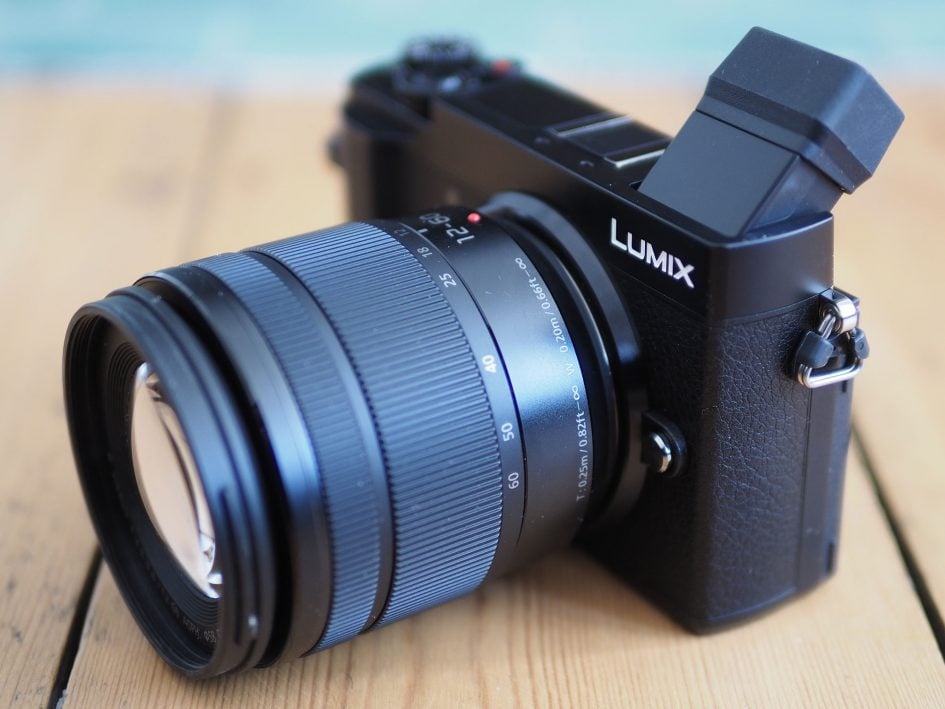
Like the GX8 and GX7 before it, the GX9 employs a rangefinder styled body with a flat-top and the viewfinder built-into the corner, simply in terms of size it's overmuch more than like the GX80 / GX85 or the older GX7, eschewing the chunkier GX8's dimensions for something more portable. The configuration preceding with the Lumix G 12-60mm zoom weighs 660g. The little size and lower pitch way the GX9 inevitably misses out connected some of the GX8's sophistication such as the chunky grip, weather-sealing, mike input and full-articulated sidelong-hinged screen, but it does include a popup flash which was awol on the GX8. Note like the GX80 / GX85, the hold and thumb rest are pretty small, and so the GX9 feels most comfortable with fairly compact lenses.
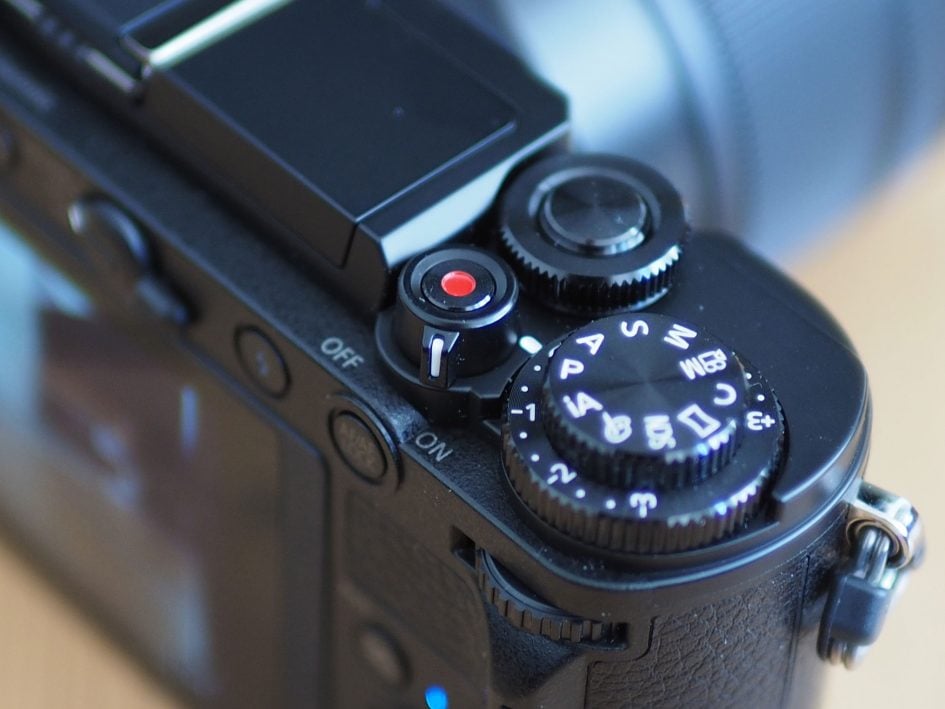
The upper right corner of the GX9 is where you'll find the main mood telephone dial, sat upon a dedicated exposure compensation dial with a +/-3EV range. Ace of the ii verify dials surrounds the shutter give up and is operated away your index number finger, while the second dial falls under your thumb on the rear and is clickable. The mild hairgrip and thumb rest agency it's not as easy to operate some dials one-two-handed as, say, the Olympus bodies, but it's just about possible. Also notice the movie immortalize button with a collar shift for the main ability. Overall the styling and grip are very twin to the GX80 / GX85.
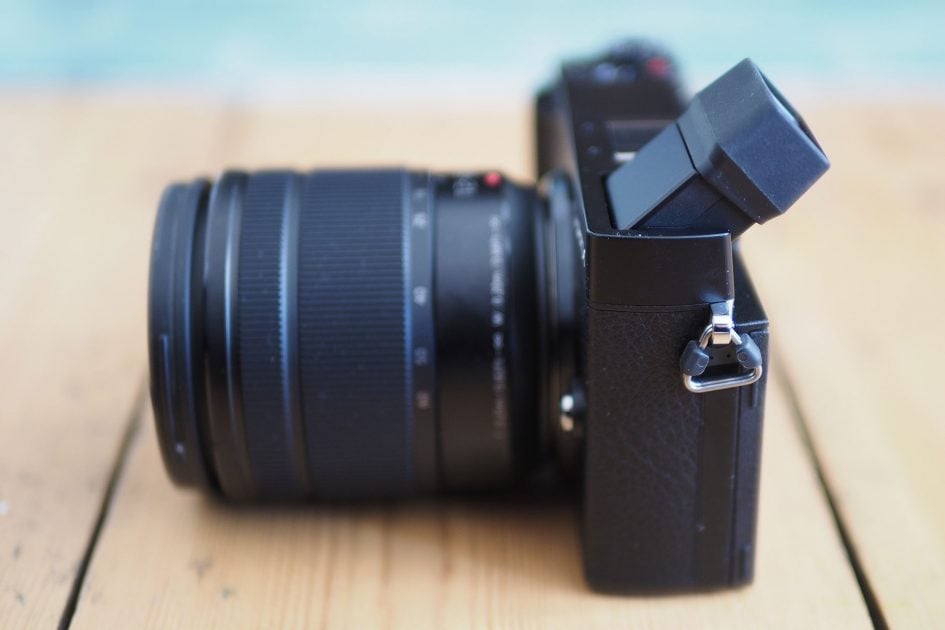
The GX9 is equipped with an electronic viewfinder which look-alike the GX8 tail end angle-up by as much American Samoa 90 degrees. This is a pretty unequaled capability and allows you to more comfortably frame at low angles, although you also ingest the alternative of angling the screen if you prefer. Unlike the GX8's 4:3 shaped OLED viewfinder control panel though, the GX9 inherits the 16:9 molded field-sequential panel of the GX7 and GX80 / GX85. The wide shape means the finder image Crataegus laevigata be full when filming HD or 4k video, but letter of the alphabet-boxed quite severely when shooting motionless photos in the native 4:3 shape where thick black bars are employed on the left and right sides. This in turn means composition – or playacting – photos won't exploit the loaded size or 2760k dot resolution of the finder panel. A bigger issue – for me anyhow – is the field sequential technology which behind support from rainbow / fierce artefacts as you coup d'oeil across the image, particularly with text or in menus. Roughly people, including myself, are very sensitive to this, while others won't notice it at complete. If you have sensitive eyes, I'd recommend trying the tv camera before purchasing, or going for a model with a more stable OLED control board instead; these also tend to use a 4:3 shape which is optimized for stills on Lumix cameras, although 16:9 video will of course suit alphabetic character-enclosed.
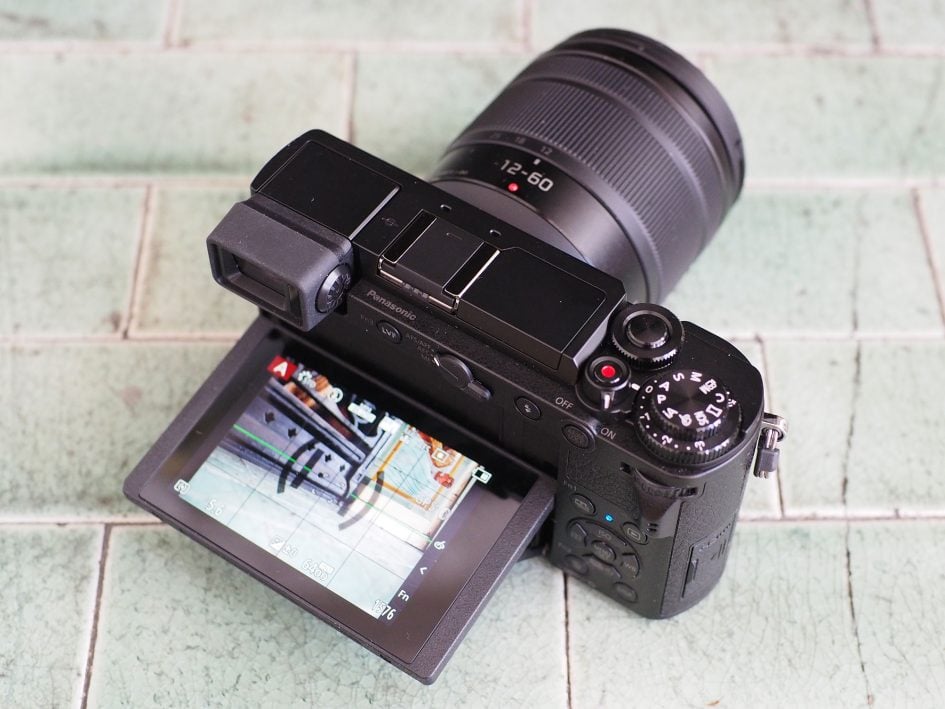
The GX9 is equipped with a 3in / 3:2 shaped / 1240k dot touchscreen which give the sack angle up away around 90 degrees and down by about 45 degrees for easy composition at high or low angles; unlike the GX8 though, it won't flip-forward to present the dependent which is frustrating if you'atomic number 75 into selfies or vlogging. In some consolation though, the touchscreen interface is excellent, allowing you to not only tap to refocus, but also tap your way through with the menus, drag guides, and swipe and pinch your way through playback. You arse also use it as a touchpad to adjust the AF area while composition through the viewfinder, although if you're a left-left-eyed shooter – like me – you'll rule your nose a great deal inadvertently moving the AF area. Therein example, disenable the touchpad feature film – this will turn-off the touch screen when composing through with the viewfinder, but return all touch functionality when you pen with the screen.
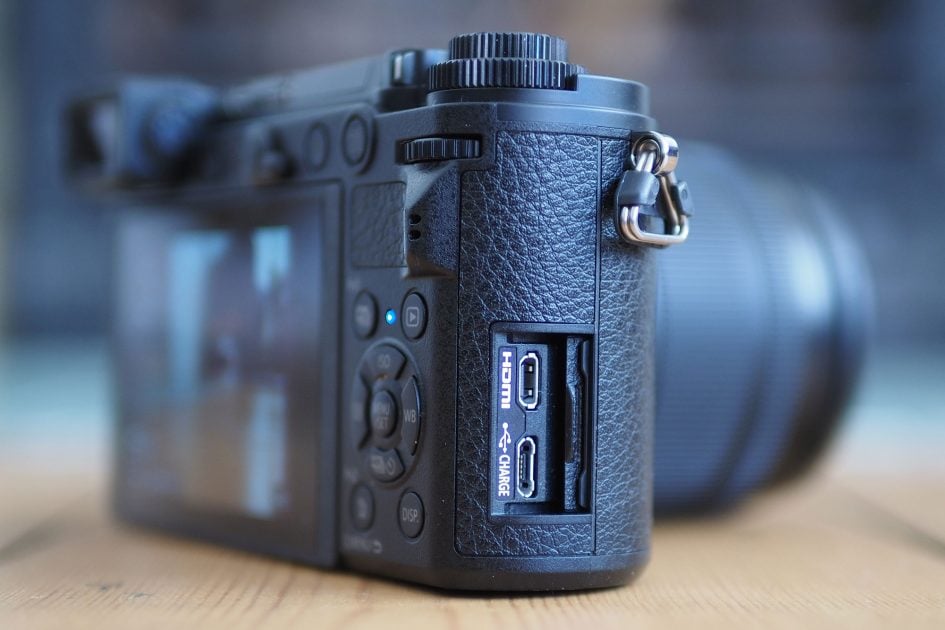
The GX9 is equipped with Micro USB and Mini HDMI ports, both of which behind an unusual door which springs back into the body; sadly it loses the microphone stimulus of the GX8 though. The GX9 is charged over USB and is supplied with an Actinium arranger. In terms of battery life I managed around 200 shots positive few minutes of video per charge; for video alone, I managed just nether tercet half hr clips of 4k video with stabilisation enabled. The HDMI output matches the picture show frequency, including 4k UHD at 24, 25 or 30p, and a setting can configure IT for a clean icon without icons.

The Lumix GX9 can utilise any lens designed for the Micro Quaternary Thirds system, with a riches of options from Panasonic, Olympus and a number of third parties; it's the most ingrained of altogether the mirrorless systems, and you can check out the models I recommend in my Best Micro Four Thirds lenses guide. As I mentioned earlier though, the modest grip means the GX9 feels most comfortable with the smaller lenses in the series. The GX9 is available in three other lens system kits conditional domain: there's the basic Lumix 12-32mm (a tiny collapsing soar equivalent to 24-64mm, portrayed lower on this page), the Lumix 12-60mm f3.5-5.6 (a good mid-crop option with a 24-120mm equivalent range and the one I chose for near of my tests here), and the Leica 12-60mm f2.8-4 (a richly-end option with a brighter aperture than the Lumix interlingual rendition, allowing shallower depth-of-field personal effects). You can see the 12-60mm coverage above, taking you from wide to mid-telephoto.
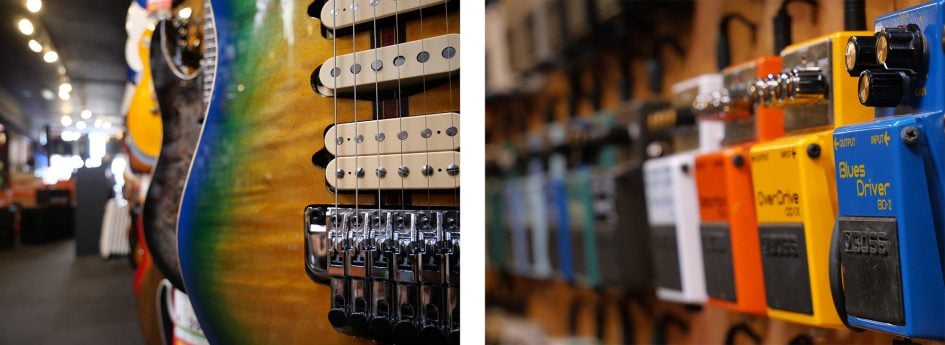
The Lumix G 12-60mm isn't going to set whatever record when IT comes to delivering a shallow depth-of-flying field, but it's par for the course for a kit zoom, and if you get close to the dependent you can achieve extraordinary blurring in the background. Above are examples close up at 12mm (left) and 60mm (right), both at their maximum focal ratios of f3.5 and f5.6 respectively.
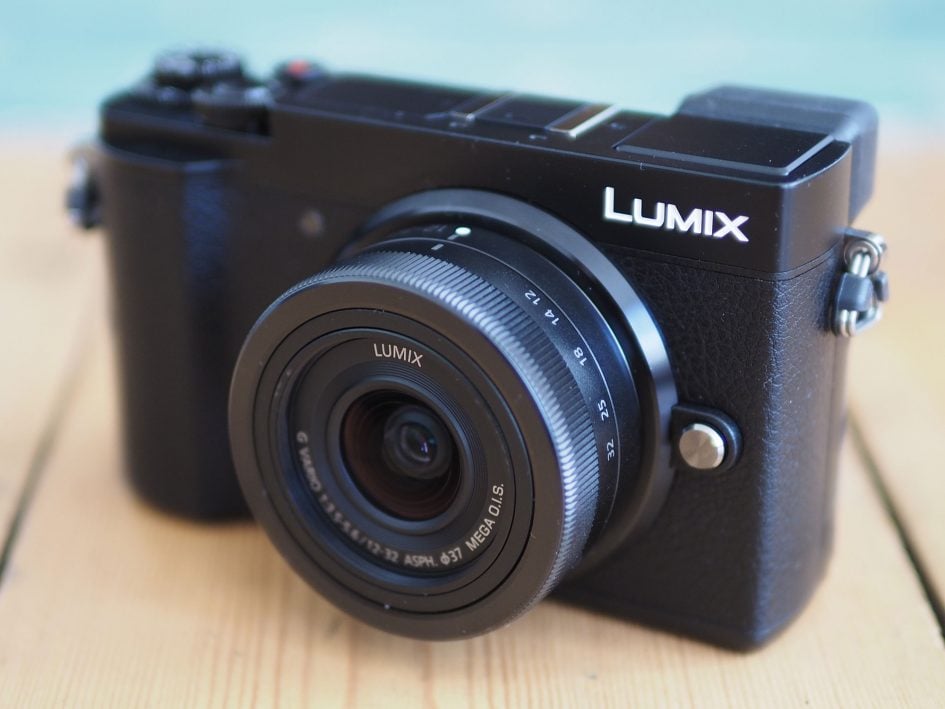
If you're after the maximum portability, the Lumix G 12-32mm transforms the GX9 (or indeed almost Little Four Thirds bodies) into a very concise package. That said, I personally prefer the greater reach and quality of the Lumix G 12-60mm zoom.
The Lumix GX9 features built-in sensing element pitch stabilisation that industrial plant with any Lens you attach, and if you mount one of Panasonic's Dual IS compatible lenses, their optical stabilisation works alongside the sensor-shift system to deliver even higher compensation. To put IT to the psychometric test for stills, I shot a book case with two lenses: the Olympus 75mm f1.8, which has zero optical stabilisation, and the Lumix G 12-60mm, which is a Double IS compatible zoom. I'll start with the Mount Olympus 75mm which uses the sensor-tilt arrangement alone.

With the Mount Olympus 75mm affixed on the Lumix GX9, I shot a serial of images with shutter speeds descending matchless point at a meter, first without stabilisation, then with it enabled. Without stabilisation on the Clarence Day, I needed a shutter speed of 1/160 for a utterly crisp result, although I also managed healthy results at 1/80. With stabilization enabled in the GX9 torso, I matched the flawless crispness down to 1/20, and managed a good outcome at 1/10. I've presented 100% crops from the 1/10 samples above with the unstabilised rendering on the left. Thus in that test, the sensor-based stabilization gave me a solid three Newmarket of compensation, making unstabilised lenses much more than usable. Remember not righteous to avoid camera shake in your photos, but also during composition and video.

With the Lumix G 12-60mm affixed on the GX9 and set to 60mm, I once again shot a serial of images with shutter speeds descending one stop at one time. With stabilisation unfit, I required a shutter speed of 1/60 for a perfectly sharp result on the day. With stabilisation enabled (in this case Duple IS), I could accomplish the same result at 1/8, once again resulting in a solidness three boodle of compensation. I've pictured 100% crops from the 1/8 versions above, with the unstabilised adaptation on the unexhausted. So in my tests with still photos, the Dual IS lens didn't deliver any measurable benefit over the uncomparable which used sensor-tilt only, although it can help better the firmness when motion-picture photography handheld video.
Like all Panasonic Lumix G bodies to date, the GX9 exclusively employs a contrast-supported system for autofocus. The benefits are accuracy and operation in very low light levels, but the downside is less confident round-the-clock focal point than a phase-detect or hybrid organization. In terms of the benefits, the GX9 can surely focus very quickly and accurately, snapping onto near subjects in a New York minut, and with operation down to -4EV, you'll static be able to rive in very dim conditions when other cameras struggle. The face spying with eye spotting also worked well.
In terms of continuous autofocus, Panasonic employs their Depth away Defocus, or DFD, engineering science that profiles their Lumix and Leica lenses to better understand how to refocus them supported how the blurred areas look. The arrangement has matured over several generations now, and the GX9, like new recent Lumix G bodies, actually does a vey good job at tracking and refocusing connected subjects moving towards or inaccurate from you even with long lenses. That aforesaid, IT's even so virtually confident with foreseeable motion like cyclists, and less successful with more random subjects like birds in flight. The contrast-based system also canful't help but wave-off and side stake to confirm, and while this happens quick for stills, it can be visually distracting during video as I'll demonstrate later in the review. In the end if you shoot a mass of uncertain winged action at law, there's better choices for continuous AF, particularly from Sony.

Above: Lumix GX9 at 9fps with Leica 50-200mm at 200mm f4. Below: 100% crops.


Above: Lumix GX9 at 9fps with Leica 50-200mm at 200mm f4. Below: 100% crops.


Supra: Lumix GX9 at 9fps with Leica 50-200mm at 200mm f4. Below: 100% crops.


Above: Lumix GX9 at 9fps with Leica 50-200mm at 200mm f4. Below: 100% crops.

The GX9 can shoot bursts at 2, 6 or 9fps, all available with continuous autofocus if desired, although live feedback is only offered at the lower two speeds. Panasonic quotes a buff of up to 30 RAW images or over 100 JPEGs. In my formal tests with a UHS-II card, the GX9 captured 120 Large Pure JPEGs in 12.95 seconds for a rate of 9.27fps earlier slowing down. Set to Rare, I captured 33 images in 3.6 seconds for a rate of 9.17fps before it stalled. In my literal-life tests, I photographed my admirer Ben cycling towards me victimization single or zoned areas and round-the-clock autofocus. With the drive set to High speed bursts, the GX9 successfully kept him in sharp centre even when using the Leica 50-200mm at 200mm f4 – as seen supra – although at this speed there was no live feedback, making IT hard to track unpredictable military action. When tracking more random subjects, like birds in fledge, you'll find oneself IT much easier to follow the legal action at the slower 6fps mode which provides live feedback. Even then though, Eastern Samoa noted above, the GX9's autofocus doesn't feel that confident when shooting the freakish motion of birds in flight which enter the frame quickly and often move around randomly.

Above: Lumix GX9 Yeasty effects
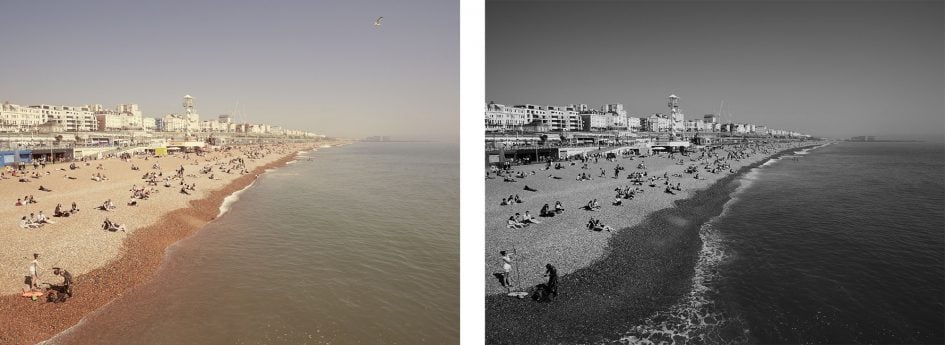
Above: Lumix GX9 Creative effects
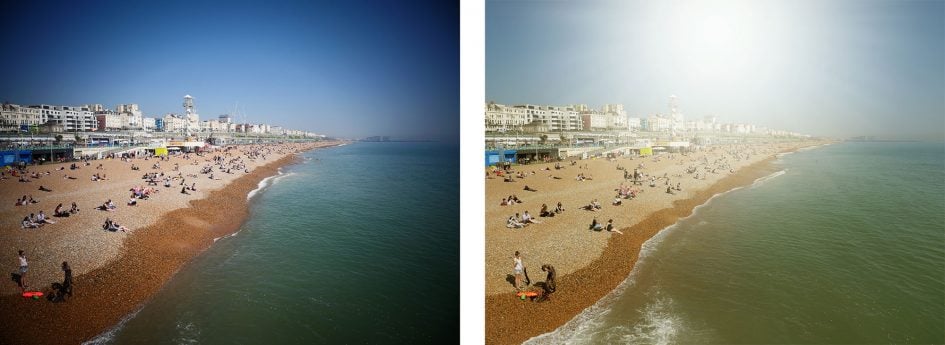
Set the mode dial to Creative Control and the Lumix GX9 offers 22 effect filters, a selection of which are shown above; some can also be applied to video. RAW processing in playback is also provided, allowing you to adjust the white balance, brightness, photo style, dynamic sweetening, counterpoint, spotlight, shadow, saturation, noise reduction, resolve enhancement, sharpness, colour space and output resolution, although you'atomic number 75 incapable to apply some of the Creative personal effects in playback. If you like to shoot silently, there's the option of an electronic shutter mode which as wel extends the fastest shutter speed from 1/4000 to 1/16000, albeit with the usual limitations along shooting subjects moving quickly crossways the frame or under celluloid light. There's likewise 3, 5 OR 7 framework exposure bracketing A well as focus bracketing available.
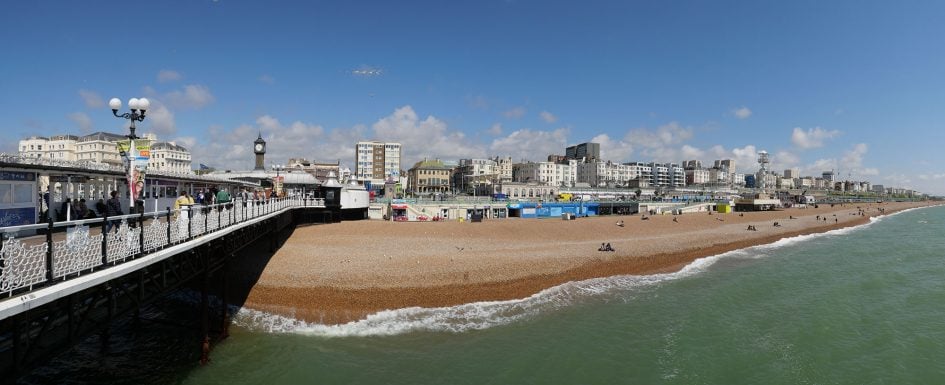
Above: Lumix GX9 prospect

A panorama mode is available and the GX9 does a fair job at in-photographic camera stitching, although in the second model above it has made a mistake on the building.

Making its debut on the GX9 is Panasonic's latest L Monochrome D Picture Style. Hot happening the heels of the recent L Monochrome style, this is an even higher contrast option as seen higher up. The three monochrome Picture Styles along the GX9 now also offer a choice of three food grain simulations, with crops of each pictured below at 100% alongside the unmistakable interpretation on the left. It's nice to see Panasonic putting more effort into improving their JPEG engine with both colour and black and white options now looking better than ever.

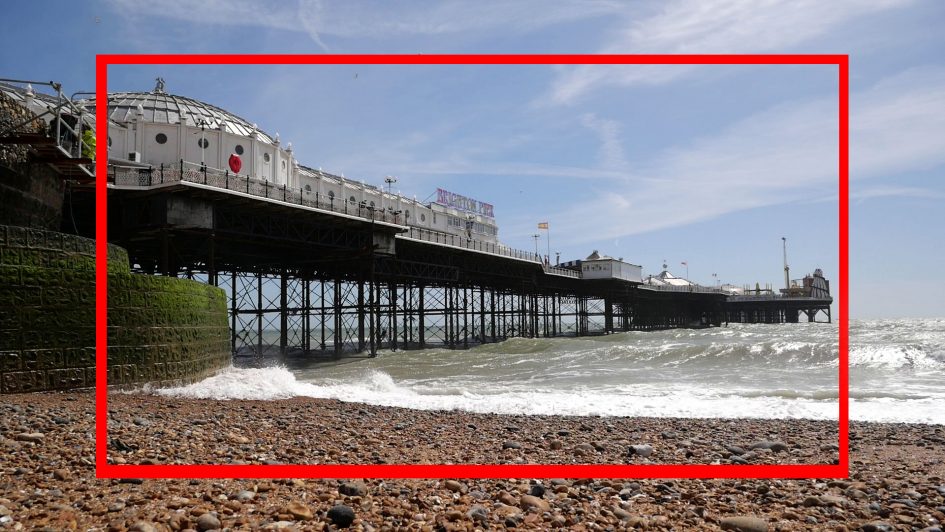
The Lumix GX9 is a very capable movie camera, able to film 720p at 25 or 30p, 1080p at 25, 30, 50 or 60p, operating theater 4k UHD at 24, 25 or 30p; there's no frame rates in a higher place 60p for slow down apparent movement. If you'd like to grade your footage, the Cinelike D profile is open for fairly flat output; this was added with the v1.1 firmware update. Footage filmed in 720p Beaver State 1080p takes the full sensor width, while 4k footage takes a clip; I've indicated the 4k coverage compared to 1080p above where the outside edge of the red-faced put indicates 4k footage. The 4k field-of-aspect works unstylish at around a 1.26x crop horizontally compared to 1080p which is the same as the GX8 before it, but more severe than the 1.1x crop of 16 Megapixel Lumix bodies; note the G9 and GH5(s) avoid a pasture in any mode. You can film a second shy of half an hour in any mode and in my tests I managed just under three half hour clips of 4k with stabilisation on a single charge; the camera was uncomfortable after filming for all but an minute and a half, but not hot. Audio is recorded with intrinsic microphones only as there's no extrinsic mic input. Dissimilar the GX8, movies can exploit the sensor shift stabilisation with the alternative of additional digital stabilisation if desired, albeit with an extra clip to accommodate it, careless of quality mode. Autofocus employs the GX9's contrast-based system. I experience examples, comparisons and demonstrations of altogether of this in my movie mode video below.
Above you can see a compilation of film clips filmed with the Lumix GX9, comparing the quality between 4k and 1080p, as well as demonstrating the focus trailing and stabilisation options. If you'd equal to check knocked out the footage straight from the photographic camera, you can download my Lumix GX9 4k daytime movie, Lumix GX9 4k Cinelike-D movie, Lumix GX9 4k handheld low light movie.

Like-minded all late Lumix cameras, the GX9 offers a variety of 4K Photo modes that exploit the fact 4k video essentially captures 8 Megapixel images at 30fps. When place to 4K Photograph, the GX9 captures a short clip using photo-genial exposures and a more conventional photo shape, avoiding the motion blur and extensive forge of typical video footage. Then in playback you fanny go through the clip peerless redact at a time to happen the perfect moment, before pushing a button to export an 8 Megapixel JPEG look-alike. I enjoy using the PRE-BURST option which keeps a rolling soften of the ultimate endorse's Worth of action; then when you push the shutter button down, it commits the last second to memory, followed by combined endorsement after. You wind up with 60 frames, 30 of which are prior to the release beingness pressed which makes it easy to capture the fatal present moment symmetric if you pushed the button a split second afterwards. I use it to capture the moment birds take off, rewinding the action in playback to find the perfect frame. Note the focusing is very slow in 4K Photograph modes, thus it's second-best for subjects that aren't moving back and forth.

4K Photo also offers a Post Focus mode that refocuses the lens from near to cold during a short clip. In playback you posterior and then use the touchscreen to tap connected the part of the image you'd like to personify in focusing – the camera then cleverly winds the video back or off to the correct frame, after which you can export it As an 8 Megapixel JPEG. It's great for portraits to ensure an eye is in focus, or for multiplication when you simply desire to readapt the area that's acute. I used a 200mm lens here for a really shallow profundity-of-bailiwick, and so exploited 4K Stake Concenter to capture the scene. During playback I tapped on the bottle on the utmost right to shift the focus, before exporting the image.

Here's an image exported from the same file out, but after tapping the nursing bottle in the middle.

And here's an image exported from the same file, but after tapping on the far left side. You can export American Samoa many images arsenic you like from the same Post Focus file.

It's also conceivable to specify a range of distances you'd like to live chisel-like, after which the camera exports the requires frames before stacking them into a single image. Information technology tush have varying results but here has done a fair job at getting about all the bottles in focus – not back considering the shallow depth-of-field on all individual frame A seen in the previous three examples.
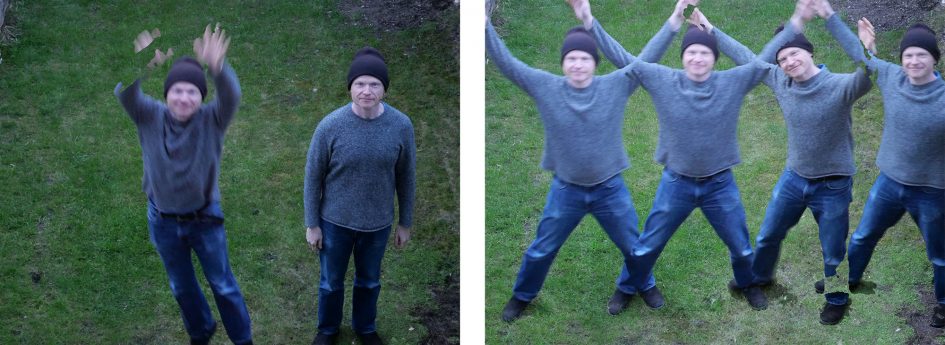
New to the GX9 is Sequence Composition which you seat apply to 4k Photograph files during playback. This lets you select twofold frames from a sequence, after which the camera extracts them and composites them into a sui generis image. This industrial plant best with a tripod-mounted camera and a static backclot, allowing you to register a subject moving across the frame in diametrical poses or positions. Information technology'd piece of work asymptomatic for a bird fast-flying across the frame, a ski jump or flim-flam, Oregon – ahem – a camera brush up Editor mucking well-nig outside.
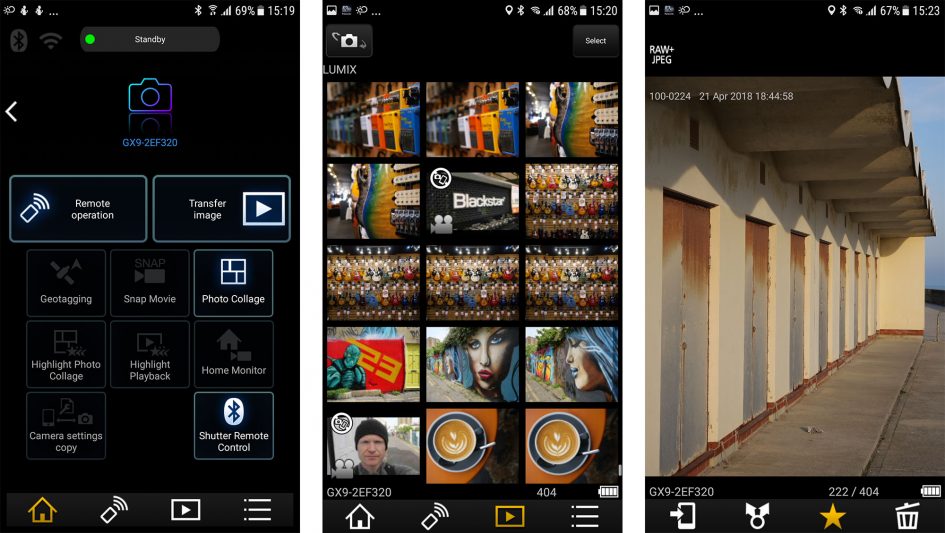
The Lumix GX9 is well-appointed with Wifi, aided away Bluetooth, and information technology's one of the C. H. Best implementations around. After pairing the Bluetooth connected the tv camera and call, you can use the Lumix Project App (for iOS or Android) to automatically connect them over WiF with a simple tap. If 'Remote Wakeup' is enabled in the camera menus, you sack even relate to that when the power switching is off; I used this feature article to browse and transfer images plane when the camera was packed away in a bulge, and on that point's also minimal force drain having the Bluetooth combat-ready day in and day out. It's besides realizable to wirelessly copy 1080p videos to your earpiece using the app, although non ones recorded in 4k.
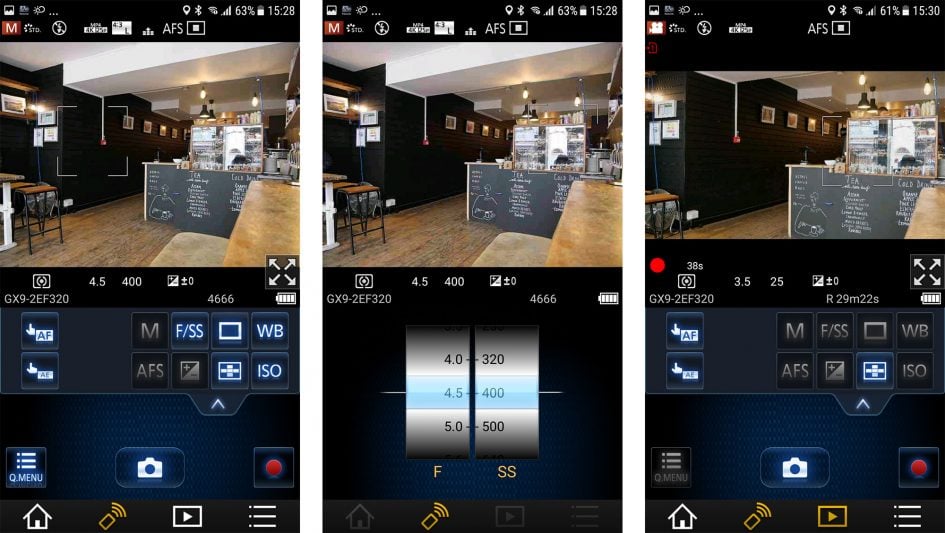
If you choose Remote Operation along the app, you tail relish glutted remote control over the camera. You can't change the exposure or focus fashion without turn a physical dial on the photographic camera, but beautiful much everything else is up for grabs and gratifyingly if you arrange deman to change by reversal the modality or AF dial, the app remains connected with the GX9. Once connected, you can remotely adjust the shutter speed and aperture, drive mode, Edward White balance, sensitivity and AF area, and use the live double to water tap to refocus; you can also remotely trigger a movie recording and over again use the phone's riddle to wiretap to drag-focalize. Information technology's also possible remotely align a wide variety of camera settings, including the image and motion-picture show quality.
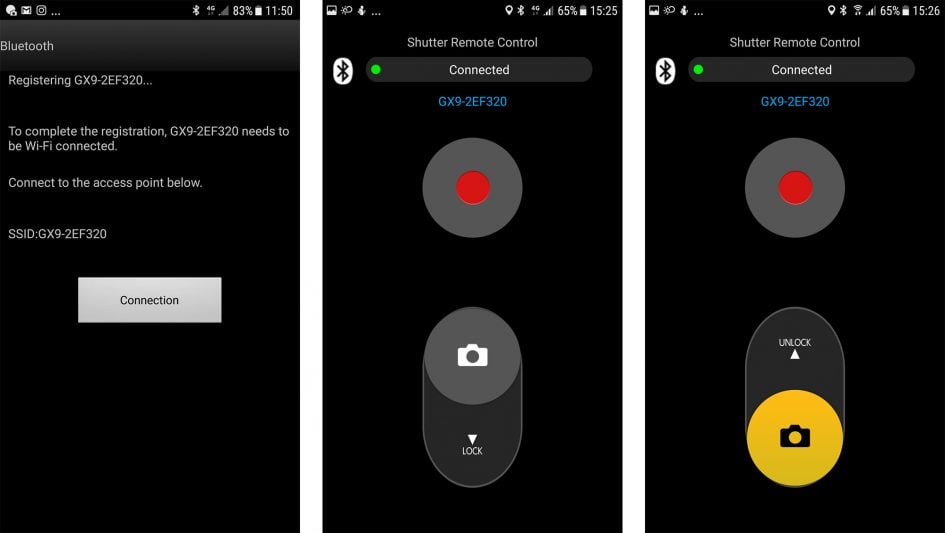
While image transfer and full remote control with live view require the GX9 and your phone to be connected over WLAN, the app allows some basic functionality with Bluetooth alone. There's a simple Shutter Remote screen which lets you remotely fire the shutter or start and stop a video with your phone and since the connection is over Bluetooth, it feels very responsive and there's no necessitate for the connection delays of initiating WLAN. Information technology's also useful for long exposures with the camera set to T in Manual, although in a missed opportunity there's no timer displayed on the telephone set or camera screen. Right on straightaway, only Canon and Panasonic tender a Bluetooth release function.
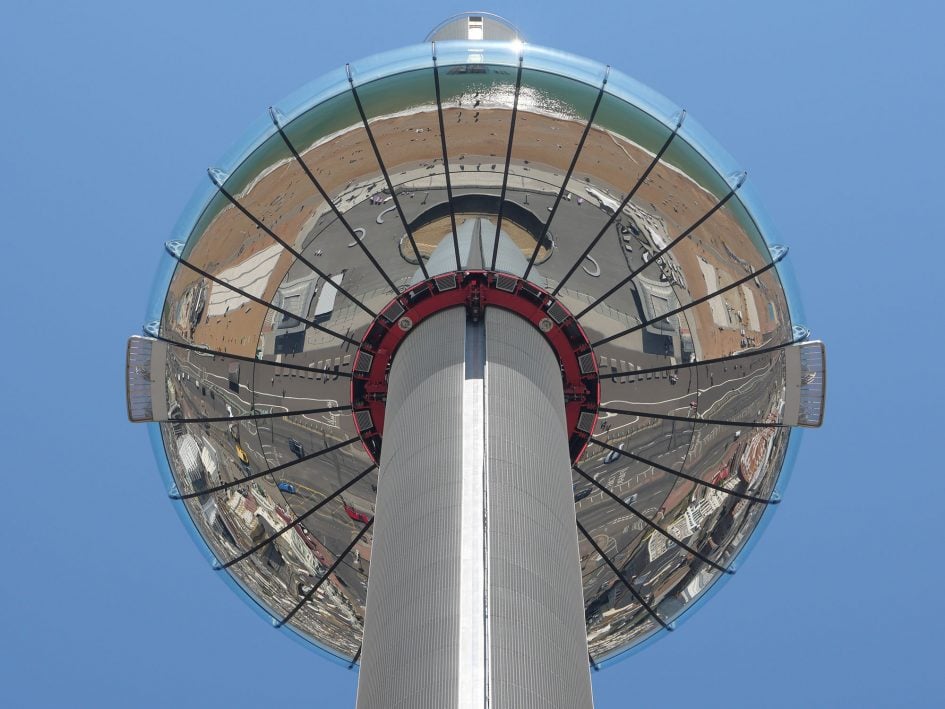
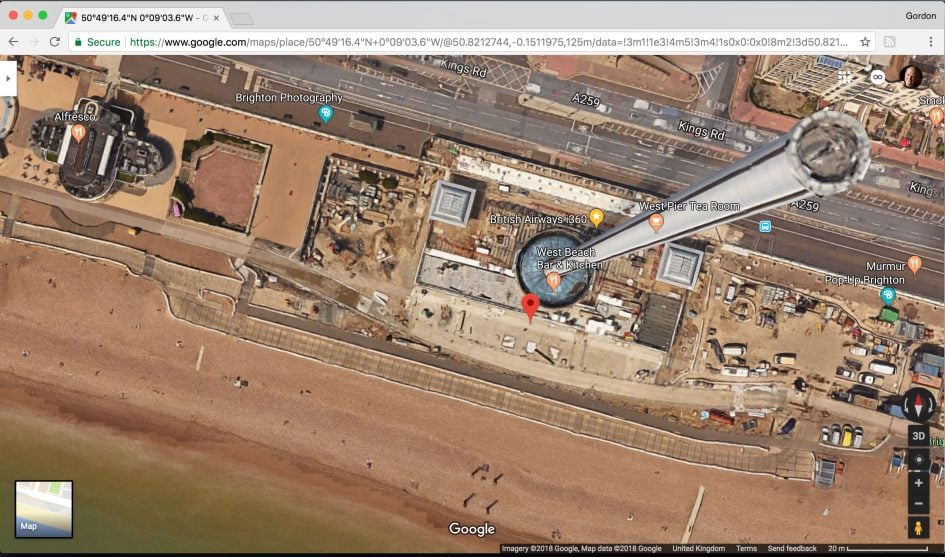
Once the camera and phone are connected over Bluetooth, you can too use the app to mechanically tag images with their Global Positioning System position; afterward the initial Bluetooth pairing, all you need to do is enable Locating Logging in the camera's Bluetooth menu, then leave the Image App running on your call up. Bingo! GPS positions automatically embedded without the take to record a lumber and synchronize it later. In pattern it works a treat and at the time of writing, only Panasonic, Canon and Sony offered similar functionality. I used it to tag most of the images in my review, and for the one above I entered the position into Google Maps.
Halt prices on the Panasonic Lumix GX9 at Amazon, B&adenosine monophosphate;H, Adorama, or Wex. Or els get yourself a copy of my In Camera book or cover ME to a coffee! Thanks!Pages: 1 2 3 4
Panasonic Lumix GX9 review
Source: https://www.cameralabs.com/panasonic-lumix-gx9-review/
Posting Komentar untuk "Panasonic Lumix GX9 review"